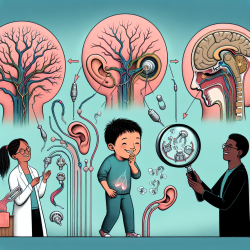Unlocking the Potential of Healthcare Aides in Long-Term Care
As a Special Education Director, I often find myself immersed in the complexities of workforce management, especially when it comes to ensuring that every member of our team is utilized to their fullest potential. A recent study titled Are healthcare aides underused in long-term care? A cross-sectional study on continuing care facilities in Canada sheds light on a critical area that may be overlooked in many care settings: the optimal utilization of healthcare aides (HCAs).
The Study at a Glance
Conducted in a Western Canadian province, this research involved a comprehensive survey of continuing care facilities, including both long-term care (LTC) and supportive living (SL) environments. The study aimed to examine the variations in how HCAs are utilized across these settings, focusing on their involvement in medication assistance and other care activities.
Key Findings
- Approximately 81% of HCAs were fully certified, yet their roles varied significantly between SL and LTC facilities.
- HCAs in SL facilities were more involved in medication management, with 86% receiving mandatory medication assistance training compared to 50% in LTC facilities.
- SL facilities reported higher HCA involvement in tasks such as meal preparation, housekeeping, and laundry services compared to LTC.
Implications for Practice
The study's findings suggest that expanding the role of HCAs in LTC facilities could lead to more efficient workforce utilization. By involving HCAs in medication assistance and other skilled tasks, LTC facilities can alleviate the workload of licensed practical nurses (LPNs) and registered nurses (RNs), allowing them to focus on more complex care activities.
Why It Matters
Optimizing the use of HCAs not only enhances workforce efficiency but also improves job satisfaction among HCAs, as they are able to use their full range of skills. This, in turn, can lead to better quality of care and improved resident outcomes.
Next Steps for Practitioners
For practitioners looking to implement these findings, consider the following steps:
- Evaluate the current roles and responsibilities of HCAs in your facility.
- Assess the feasibility of expanding HCA roles to include medication assistance and other skilled tasks.
- Ensure that HCAs receive standardized training to equip them with the necessary skills for expanded roles.
- Engage with stakeholders, including HCAs, to understand their perspectives and willingness to take on additional responsibilities.
By taking these steps, practitioners can contribute to a more efficient and effective healthcare system that maximizes the potential of all team members.
To read the original research paper, please follow this link: Are healthcare aides underused in long-term care? A cross-sectional study on continuing care facilities in Canada.










